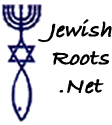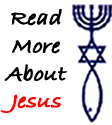

Talmudic Works - What Makes Up The Talmud?
Mishna - Seeds - Times - Women - Damages - Holiness - Purity
Gemara Jerusalem Talmud - Gemara Babylonian Talmud - Midrash - Zohar
Mishna:
- The Mishna was redacted by Rabbi Judah
the Prince in 170 C.E. in Israel. It is a concise formulation of Jewish law
and ethics written in Hebrew containing Biblical, Oral and Rabbinic laws.
- The following are the six orders (Shisha
Sedarim or "Shas") of the Mishna:
- Zeraim - Seeds
- Moed - Times
- Nashim - Women
- Nezikim - Damages
- Kodshim - Holiness
- Taharot - Purity
Zeraim - Seeds:
- The first tractate (Masechta) of this
order is "Berachot" - "blessings" - which teaches the laws of blessings,
prayers and the synagogue service.
- The other ten tractates discuss the
agricultural laws that apply in the Land of Israel and also those that apply
outside of Israel.
Moed - Times:
- This order deals with the sanctity of
time.
- It contains twelve tractates that discuss
the Sabbath, Festivals, the High Holidays, the calendar and the fast days.
Nashim - Women:
- This order deals with the sanctity of the
male-female relationship.
- Its seven tractates discuss the laws of
marriage and divorce, the marriage contract (Ketuva), incest and adultery,
vows and their annulment, and levirate marriages (Yibum and Chalitza).
Nezikim - Damages:
- This order deals with the laws governing
a persons possessions. Its nine tractates discuss:
- Damages and torts; lost and abandoned
objects; business ethics and laws of trade; property and inheritance;
jurisprudence, government and the monarchy; laws of evidence, punishment and
oaths; the prohibition of idol worship and relationships with pagans; and the
laws of erroneous rulings by a court.
Kodshim - Holiness:
- This order deals with the laws of the
sacrifices and offerings in the Temple; the laws of redemption of the
firstborn; donations to the Temple treasury; and the laws of Kashrut, the
Jewish dietary code.
- Kodshim contains eleven tractates.
Taharot - Purity:
- Taharot deals with the laws of spiritual
purity and impurity (Tumah vetaharah). Its twelve tractates discuss the laws
of family purity; impurity caused by death and disease and the various methods
of purifying people and objects.
- The laws, structure and purpose of the
Mikva are also detailed.
Gemara - Jerusalem Talmud:
- The Jerusalem Talmud was redacted in the
year 350 C.E. by Rav Muna and Rav Yossi in Israel. It contains explanations of
the Mishna, legislation, customs, case histories and moral exhortations.
- The Gemara is a synopsis of the
discussions, questions and decisions of the Academies in Israel where the
Mishna had been studied for almost 200 years.
- Due to the location of the Academies, the
agricultural laws of the Land of Israel are discussed in great detail.
Gemara - Babylonian Talmud:
- The Babylonian Talmud was redacted in the
year 500 C.E. by Ravina and Rav Ashi, two leaders of the Babylonian Jewish
community. The language of the Talmud is Aramaic, in Hebrew script.
- It contains explanations of the Mishna,
legislation, customs, case histories and moral exhortations.
- The Gemara is a synopsis of the
discussions, questions and decisions of the Babylonian Academies in which the
Mishna was studied for more than 300 years.
Midrash:
- The Midrash is a generic term for a group
of approximately 60 collections of Rabbinic commentaries, stories, metaphors
and ethical essays arranged around the books of the Torah, Prophets and
Writings. It includes also various commentaries on the letters of the Hebrew
alphabet as well.
- Most of the Midrashim date back to the
time of the Mishnah and many authors of the Midrash appear in the Mishnah and
vice versa. Many of the central concepts and commentaries of the Midrash are
part of the Oral tradition from Sinai.
- The most famous collections of Midrashim
are the Midrash Rabba, the Midrash Tanchuma, Yalkut Shimoni, Sifri, Sifra and
Mechilta.
- The Maharal of Prague writes, regarding
the Midrashim of the Sages that "most of the words of the Sages were in the
form of metaphor and the analogies of the wise... unless they state that a
particular story is not a metaphor, it should be assumed that it is a
metaphor. The matters of great depth were generally expressed by the Sages
using metaphors, and should be understood as metaphors unless they are
explicitly indicated to be taken literally. And therefore one should not be
surprised to find matters in the words of the Sages that appear to be
illogical and distant from the mind."
- Rabbi Avraham, son of Maimonides in a
famous essay on the Midrash categorizes the midrashim in the following way:
The drashot of the Sages can be divided into five categories:
- A drasha meant to be understood according to its simple meaning.
- A drasha that has both an external and superficial meaning as well as an internal, hidden meaning
- A drasha that has no hidden meaning, but whose
simple meaning is complex and requires effort and information to understand fully
- Drashot that are used to explain a verse without claiming to represent the simple meaning of the words, rather one of many
possible ideas that are expressed in the verse. Similar to poetic
interpretations, and use of the verse to illustrate or teach a moral idea
- Drashot that use hyperbole and exaggeration to make a point
There are four types of stories told by the Sages:
- A story from which it is possible to
derive legal conclusions.
- A story from which can be derived a
moral lesson.
- A story that teaches an idea in
philosophy or in faith.
- A story that tells of a wondrous or
miraculous event.
These stories could be one of three
types:
- A story that happened in a dream or in
a prophetic vision, but that did not actually take place in the physical
world.
- A story that actually happened but that
is related in an exaggerated fashion to emphasis certain ideas.
- A story that actually happened, but
that is related as a metaphor so that the way in which it is related and
every word chosen is not chosen for the accuracy of the story, but to convey
the essence of the metaphor.
One should also be aware that a
drasha may be a combination of any of these types of drashot or stories.
Zohar:
- The Zohar was written by the students
of Rabbi Shimon bar Yohai, who transcribed his teachings in about 170 C.E.
in Israel.
- It discusses the concepts of Creation
ex nihilo, Divine Providence and its mechanisms, the metaphysical meaning of
the commandments of the Torah and the the connection between the physical
and the spiritual.
- Written in Aramaic, it follows the
order of the Five Books of Moses. The Zohar is the principle source text of
the Kabbalah, the Torah's mystical teachings.
Miscellaneous:
Acknowledgments:
Compiled by Rabbi Mordechai Becher
and Rabbi Moshe Newman
HTML Design: Michael Treblow
Reposted with permission:
Copyright © 1996 Ohr Somayach International. Send comments to: ohr@virtual.co.il







![]()
![]()